- Tips for Growing Roses Indoors
- Choosing the Right Rose Variety
- Factors to Consider
- Popular Rose Varieties for Indoor Growing
- Providing Adequate Lighting
- Temperature and Humidity Control
- Temperature
- Humidity
- Tips for Temperature and Humidity Control:
- Soil and Watering Requirements
- Soil Requirements
- Watering Requirements
- Fertilizing Requirements
- Fertilizing Your Indoor Roses
- 1. Choose the right fertilizer:
- 2. Follow the instructions:
- 3. Apply in early spring:
- 4. Use a slow-release fertilizer:
- 5. Water before and after fertilizing:
- 6. Avoid foliage contact:
- 7. Monitor your roses:
- 8. Organic alternatives:
- Pruning and Training Techniques
- 1. Pruning
- 2. Training
- 3. Maintenance
- Pest and Disease Management
- Pests
- Diseases
- Harvesting and Enjoying Your Indoor Roses
- 1. Choose the Right Time
- 2. Use Clean Tools
- 3. Cut at a 45-Degree Angle
- 4. Remove Excess Foliage
- 5. Place in Clean Water
- 6. Change the Water Regularly
- 7. Display in a Cool Location
- 8. Enjoy the Fragrance
- Q&A:
- How do I care for roses indoors?
- Can roses be grown indoors?
- What is the ideal temperature for indoor roses?
- How often should I water indoor roses?
- Why are the leaves on my indoor rose turning yellow?
- Do indoor roses need fertilizer?
- Can indoor roses be affected by pests and diseases?
- Video: The method of growing roses from buds the whole world does not know | How to propagation Roses
Roses are well-known for their beauty and fragrance, and many people dream of having these elegant flowers in their homes. While traditionally grown outdoors, it is also possible to cultivate roses indoors, allowing you to enjoy their beauty year-round. However, growing roses indoors requires specific care and attention to ensure their health and success. In this article, we will provide you with tips and advice for successfully growing roses indoors.
Growing roses indoors offers several advantages. One of the main benefits is the ability to control the environment, such as temperature and humidity, which can greatly impact the growth and blooming of roses. Additionally, indoor roses are protected from extreme weather conditions, pests, and diseases, allowing for a more controlled and predictable growing experience.
When it comes to choosing the right roses for indoor cultivation, it is important to select varieties that are well-suited for indoor conditions. Some roses are bred specifically for indoor cultivation and are more compact, disease-resistant, and thrive in lower light conditions. Look for varieties that are known for their adaptability to indoor environments and their ability to bloom repeatedly.
To provide the best care for your indoor roses, it is crucial to create the optimal growing conditions. This includes providing adequate sunlight or artificial light, maintaining proper humidity levels, and implementing a regular watering and fertilizing routine. Additionally, pruning is essential for shaping the plant, encouraging growth, and removing any dead or damaged branches.
Tips for Growing Roses Indoors
- Choose the Right Rose Variety:
- Provide Adequate Lighting:
- Control Temperature and Humidity:
- Choose the Right Container:
- Use Well-Draining Soil:
- Water Regularly:
- Fertilize Properly:
- Prune regularly:
- Monitor for Pest and Diseases:
- Rotate Indoor Roses:
- Provide Support:
Not all rose varieties are suitable for growing indoors. Look for miniature or compact varieties that are known for their ability to thrive in containers and limited space.
Roses require a minimum of six hours of direct sunlight daily. If you don’t have access to natural light, you can use artificial grow lights to ensure your roses receive the necessary light.
Maintain a consistent temperature range of 60-75°F (15-24°C) during the day and slightly cooler temperatures at night. Also, ensure the humidity levels are between 40-60% to prevent drying out or excessive moisture.
Use a container that allows for proper drainage and has enough space for the roots to grow. Opt for a container with at least a 12-inch diameter to accommodate the roots of most rose varieties.
Choose a well-draining potting mix specifically formulated for roses or mix equal parts of compost, sand, and peat moss to create a suitable growing medium.
Keep the soil evenly moist, but not waterlogged. Roses prefer slightly moist soil, so water them when the top inch of soil feels dry to the touch. Avoid overwatering, as it can lead to root rot.
Use a balanced, water-soluble fertilizer formulated for roses. Follow the instructions on the packaging for application rates and frequency. Avoid overfertilizing, as it can damage the roots.
Prune your indoor roses regularly to promote bushier growth and remove any dead or damaged branches. Pruning also helps maintain the desired shape of the plant.
Check your roses regularly for signs of pest infestation or diseases such as aphids, spider mites, or fungal infections. Treat any issues promptly with appropriate organic or chemical controls.
Rotate your indoor roses every few weeks to ensure even growth and prevent the plant from leaning towards the light source. This will help the plant maintain a more balanced shape.
Roses may require support as they grow. Use stakes or trellises to help the plant remain upright and prevent it from bending or breaking under the weight of the blooms.
Choosing the Right Rose Variety
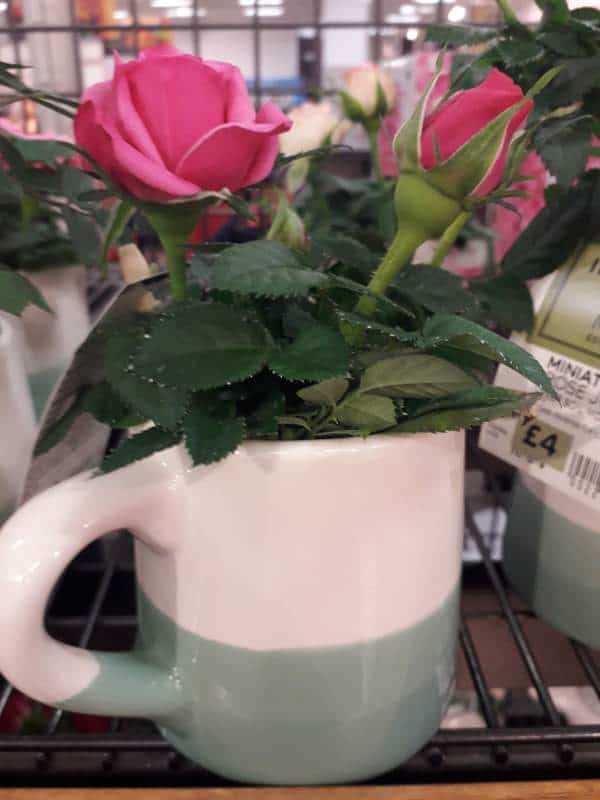
When it comes to growing roses indoors, choosing the right variety is crucial. Not all roses are well-suited for indoor growing conditions, so it’s important to select a variety that will thrive in your home or office.
Factors to Consider
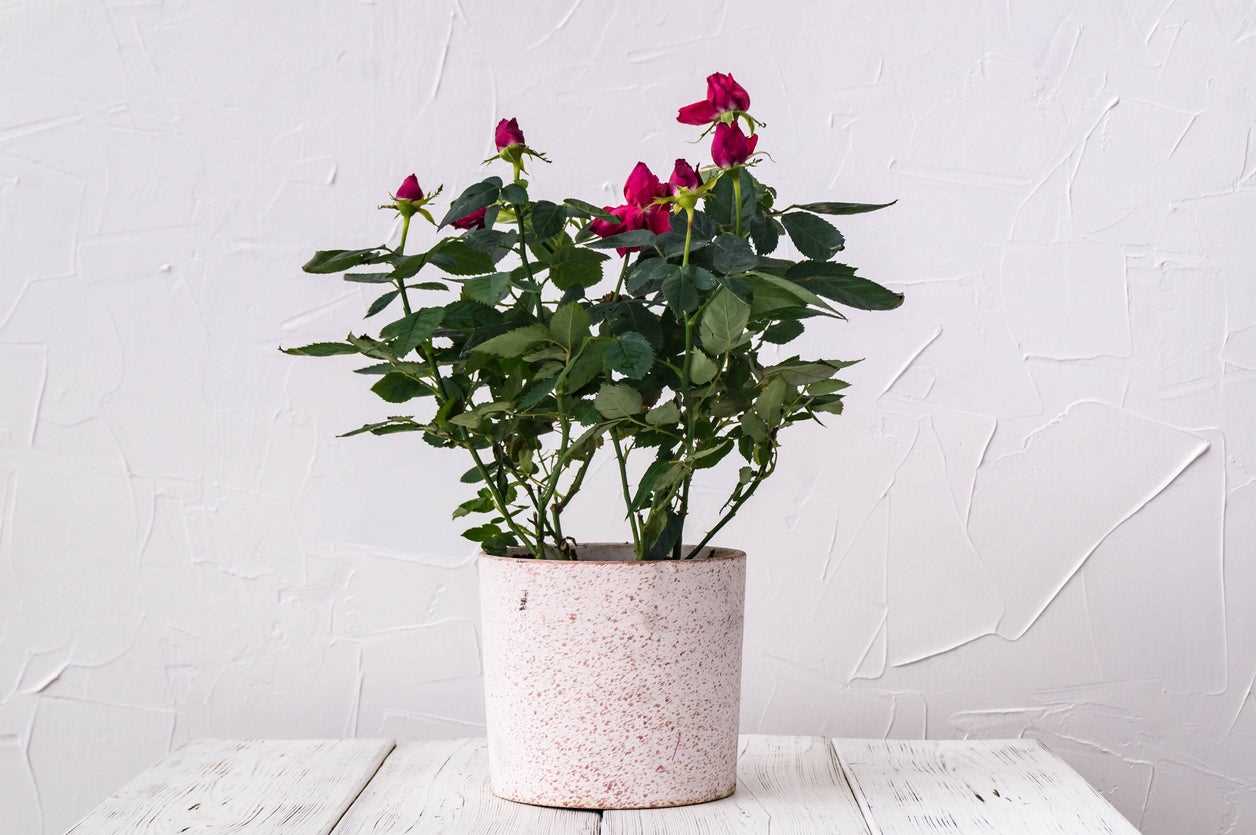
- Light Requirements: Some rose varieties require full sun, while others can tolerate partial shade. Consider the amount of sunlight your indoor space receives and choose a rose variety that matches those light requirements.
- Space Constraints: Roses can vary in size, with some varieties growing tall and spreading wide. Take into account the available space for your indoor rose plant and choose a variety that fits well within those constraints.
- Climate Adaptability: Different rose varieties may have varying degrees of adaptability to different climates. Consider the temperature and humidity levels in your indoor environment and choose a rose variety that can thrive under those conditions.
- Fragrance: Roses are known for their beautiful scents, so if fragrance is important to you, look for rose varieties that are known for their pleasant aroma.
Popular Rose Varieties for Indoor Growing
| Rose Variety | Light Requirements | Height | Fragrance |
|---|---|---|---|
| Peace | Full Sun to Partial Shade | 2-3 feet | Fragrant |
| Pink Iceberg | Full Sun | 3-4 feet | Fragrant |
| Pat Austin | Full Sun | 3-5 feet | Fragrant |
| Julia Child | Full Sun to Partial Shade | 2-3 feet | Fragrant |
These are just a few examples of popular rose varieties that are well-suited for indoor growing. Remember to research each variety for their specific care requirements before making a final decision. With the right rose variety, you can enjoy the beauty and fragrance of roses indoors all year round!
Providing Adequate Lighting
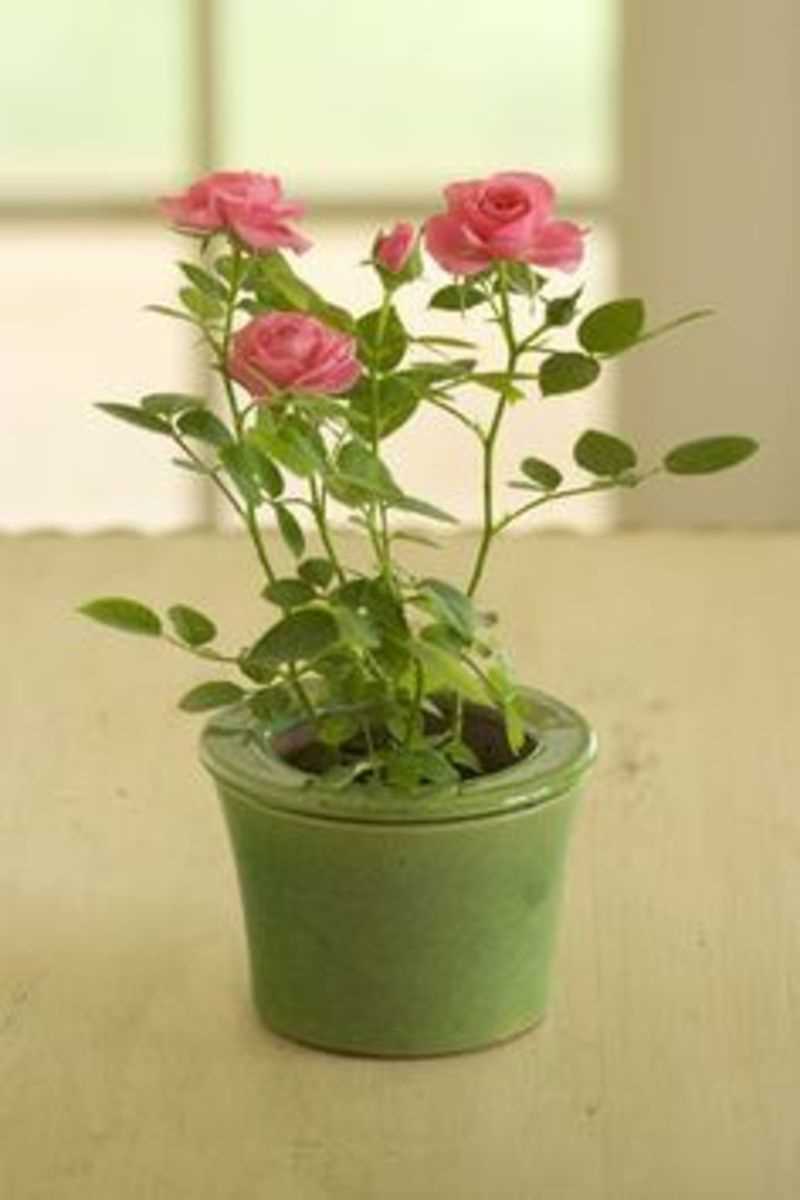
Proper lighting is essential for growing roses indoors. Since roses are sun-loving plants, it’s important to mimic natural sunlight as closely as possible. Here are some tips for providing adequate lighting:
- Choose a sunny location: Place your indoor rose plant near a south-facing window where it can receive at least 4-6 hours of direct sunlight each day. If a south-facing window is not available, you can use a west or east-facing window as well.
- Use artificial lighting: If natural sunlight is limited, you can supplement it with artificial lighting. LED grow lights or fluorescent lights with a color temperature of 6500K to 7000K are ideal for indoor roses. Position the lights about 6-12 inches above the plants and keep them on for 12-16 hours a day.
- Rotate the plant: To ensure even growth, rotate your indoor rose plant every few days. This will prevent the plant from leaning towards the light source and promote balanced growth.
- Avoid direct heat: While roses need warmth, avoid placing them too close to heat sources like radiators or heaters. Excessive heat can cause the plants to dry out and wilt.
- Monitor light intensity: Pay attention to the intensity of light your indoor roses are receiving. If the leaves appear yellowish or the plant is not blooming, it may be an indication of insufficient light. Adjust the position of the plant or add more artificial lighting if necessary.
By providing adequate lighting, you can ensure that your indoor roses receive the energy they need for healthy growth and beautiful blooms.
Temperature and Humidity Control
Controlling the temperature and humidity levels is crucial for the successful growth of roses indoors. Roses thrive in specific temperature and humidity ranges, and providing them with the optimal conditions will promote healthy growth and blooming.
Temperature
Roses prefer a cool environment with temperatures ranging between 60°F (15°C) and 70°F (21°C). Extreme temperatures, both hot and cold, can have a negative impact on the plants. It is important to avoid placing your indoor roses in drafty areas or near heaters or air conditioning vents, as sudden temperature fluctuations can stress the plants.
In colder climates, it is beneficial to provide some protection to indoor roses during winter. You can place them away from windows or use insulating materials to shield them from the cold. Additionally, you may consider using a heating mat or grow lights to maintain optimal temperatures during the colder months.
Humidity
Roses prefer a moderate level of humidity, around 40% to 60%. Dry air can cause the plants to become dehydrated, while excessively high humidity can promote the growth of fungal diseases. It is important to strike a balance and maintain an appropriate level of humidity.
To increase humidity levels for your indoor roses, you can use a humidifier. Alternatively, you can place a tray filled with water near the plants or mist them regularly with water. This will help to create a more conducive environment for the roses to grow.
On the other hand, if the humidity levels are too high, you can use a dehumidifier or improve air circulation by using fans.
Tips for Temperature and Humidity Control:
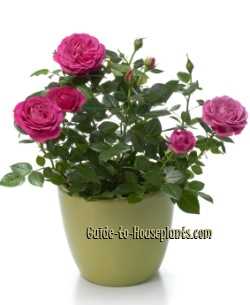
- Monitor the temperature and humidity levels regularly using a thermometer and hygrometer.
- Avoid exposing your indoor roses to extreme temperatures and sudden temperature changes.
- Protect your indoor roses from cold drafts and keep them away from heaters or air conditioning vents.
- Provide insulation for your indoor roses during winter in colder climates.
- Use a humidifier or other methods to maintain a moderate humidity level between 40% and 60%.
- Prevent excessive humidity by using a dehumidifier or improving air circulation.
By maintaining the proper temperature and humidity levels, you will create an environment that is conducive to the healthy growth and blooming of your indoor roses.
Soil and Watering Requirements
Soil Requirements
Choosing the right soil is crucial for the successful growth of indoor roses. Roses prefer well-draining soil that is rich in organic matter. A mixture of peat moss, perlite, and compost will provide a suitable growing medium for your indoor roses.
Make sure the soil has good aeration and is able to retain moisture without becoming waterlogged. This will help prevent root rot and other diseases that can be caused by excessive moisture.
Watering Requirements
Proper watering is essential for the health of indoor roses. Avoid overwatering, as it can lead to root rot and other fungal diseases. On the other hand, underwatering can cause the plant to wilt and die.
Water the rose plant thoroughly whenever the top inch of soil feels dry to the touch. This will ensure that the roots receive enough moisture without becoming waterlogged.
Using a well-draining pot with drainage holes can help prevent waterlogging. Water the roses in the morning to allow any excess moisture to evaporate during the day.
During the winter months, when the plant is in a dormant state, reduce the frequency of watering. Only water when the soil feels dry, as the plant requires less moisture during this period.
Monitor the moisture level of the soil regularly to ensure you are providing the right amount of water for your indoor roses.
Fertilizing Requirements
Indoor roses require regular fertilizing to promote healthy growth and abundant blooms. Use a balanced rose fertilizer that is specifically formulated for indoor plants.
Follow the instructions on the fertilizer package for the recommended dosage and frequency of application. Typically, it is best to fertilize indoor roses every 4-6 weeks during the growing season.
Be cautious not to over-fertilize, as this can result in excessive vegetative growth and weak flowering.
It is also beneficial to incorporate organic matter into the soil before planting your indoor roses. This will provide essential nutrients and improve the overall health of the plants.
Fertilizing Your Indoor Roses
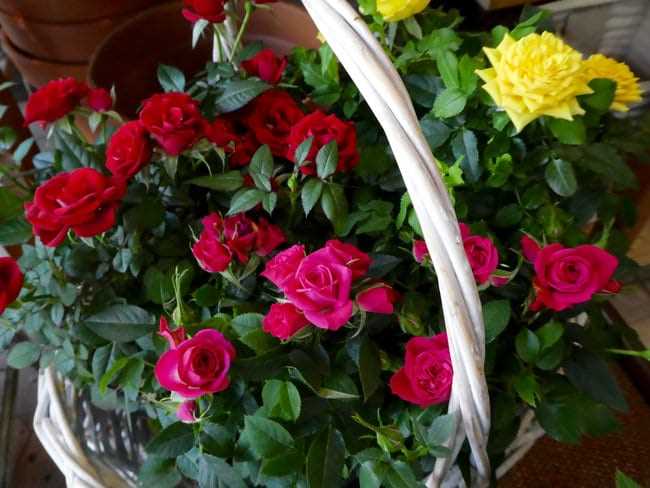
Fertilizing is an essential part of caring for indoor roses. It provides them with the necessary nutrients to thrive and produce beautiful blooms. Here are some tips on how to fertilize your indoor roses effectively:
1. Choose the right fertilizer:
Use a balanced fertilizer specifically designed for roses. Look for a fertilizer with an NPK ratio of 10-10-10 or 12-12-12, which indicates the percentage of nitrogen, phosphorus, and potassium respectively. These nutrients promote healthy growth and vibrant flowers.
2. Follow the instructions:
Read and follow the instructions on the fertilizer packaging carefully. The instructions will provide you with the recommended application rates and frequency. Over-fertilizing can damage your roses, so it’s important to follow the recommended guidelines.
3. Apply in early spring:
Start fertilizing your indoor roses in early spring, just as new growth begins. This will provide them with the nutrients they need to grow strong and healthy. Continue to fertilize every 4-6 weeks throughout the growing season.
4. Use a slow-release fertilizer:
Consider using a slow-release fertilizer for your indoor roses. This type of fertilizer releases nutrients gradually over time, providing a steady supply to the plants. It is convenient and ensures that your roses are consistently nourished.
5. Water before and after fertilizing:
Before applying fertilizer, thoroughly water your roses. This will help prevent root burn and ensure the fertilizer is evenly distributed. After fertilizing, water again to help the nutrients penetrate the soil and reach the roots.
6. Avoid foliage contact:
Avoid getting fertilizer on the leaves or stems of your indoor roses. Fertilizer can burn the foliage and cause damage. Aim for the soil around the base of the plant when applying fertilizer.
7. Monitor your roses:
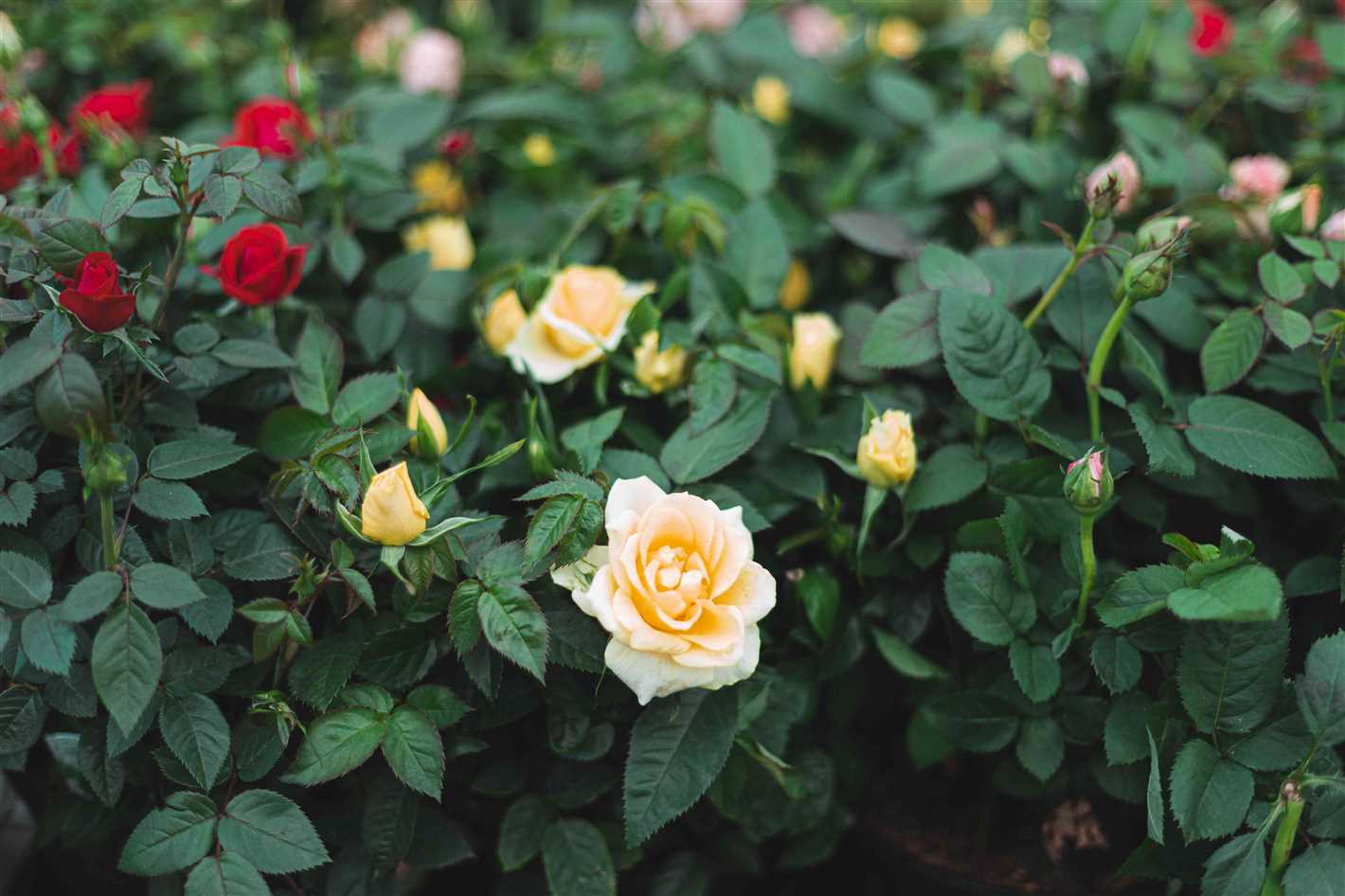
Pay attention to your indoor roses’ growth and appearance. If your roses are showing signs of nutrient deficiency, such as yellowing leaves or weak growth, adjust your fertilizing routine accordingly. You may need to increase or decrease the frequency of applications.
8. Organic alternatives:
If you prefer organic options, there are fertilizers available specifically formulated for organic gardening. These products use natural ingredients and provide a more sustainable approach to fertilizing your indoor roses.
By following these tips, you can ensure that your indoor roses receive the right nutrients to thrive and blossom, bringing beauty and joy to your indoor space.
Pruning and Training Techniques
1. Pruning
Pruning is an important part of maintaining the health and shape of your indoor rose plants. Here are some pruning tips:
- Start pruning your roses in early spring, just before new growth begins.
- Remove any dead or diseased branches by cutting them back to the main stem or bud union.
- Prune any crossing or rubbing branches to improve air circulation and prevent disease.
- Trim back any overly long or leggy branches to encourage bushier growth.
- Make clean cuts at a 45-degree angle just above a bud or leaf node.
- Remove any suckers or new growth emerging from below the bud union as they are typically from the rootstock and can weaken the plant.
2. Training
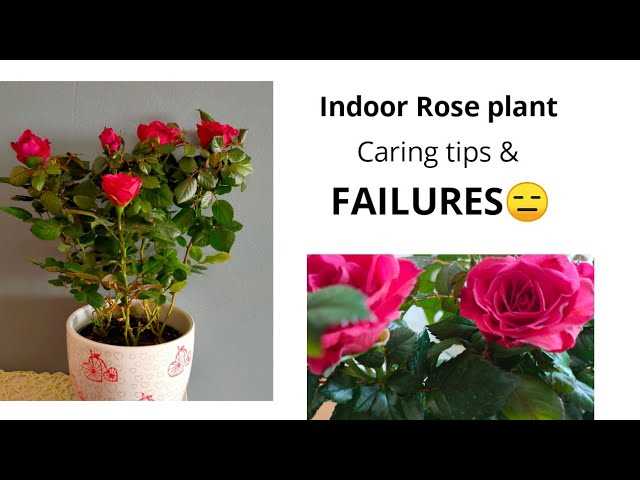
Training your indoor roses can help them grow in a desired shape and form. Here are some training techniques:
- Use stakes or trellises to support climbing rose varieties.
- Secure the main stems of climbers to the support structure using flexible ties or twine.
- If growing a bush rose, regularly prune and shape it to maintain a compact and rounded form.
- For standard roses, remove any shoots growing below the grafting point to maintain the desired height.
- Pinch out the growing tips of young rose plants to encourage branching and bushier growth.
- Regularly remove any suckers or shoots emerging from the rootstock.
3. Maintenance
In addition to pruning and training, there are some general maintenance tasks you should perform to keep your indoor roses healthy:
- Water your roses regularly, ensuring that the soil is moist but not waterlogged.
- Fertilize your plants with a balanced rose fertilizer according to the package instructions.
- Monitor your roses for pests and diseases, and take appropriate action if any issues arise.
- Provide adequate sunlight for your indoor roses by placing them near a window or using grow lights.
- Clean the leaves of your roses periodically to remove dust and improve their overall appearance.
By following these pruning, training, and maintenance techniques, you can enjoy healthy and beautiful roses indoors.
Pest and Disease Management
Proper pest and disease management is essential for maintaining the health and beauty of indoor roses. Here are some common pests and diseases that can affect roses and tips on how to manage them:
Pests
- Aphids: These small insects feed on the sap of roses and can cause stunted growth and distorted leaves. To manage aphids, you can spray the plant with a mixture of water and mild dish soap or use insecticidal soap.
- Spider Mites: Spider mites are tiny arachnids that can suck the juices out of rose leaves, causing them to turn yellow and fall off. To control spider mites, you can regularly mist your roses with water to keep the humidity high and remove any infected leaves.
- Thrips: Thrips are small insects that feed on rose flowers and buds, causing them to have a distorted appearance. You can control thrips by regularly inspecting your roses and removing any infected flowers or buds.
- Whiteflies: Whiteflies are small, winged insects that suck sap from rose leaves, causing them to turn yellow and drop prematurely. To manage whiteflies, you can use yellow sticky traps or introduce natural predators like ladybugs.
Diseases
- Black Spot: Black spot is a fungal disease that causes black spots to appear on the leaves of roses. To manage black spot, you can remove and destroy infected leaves and use fungicidal sprays.
- Powdery Mildew: Powdery mildew is a fungal disease that appears as a white powdery coating on the leaves of roses. To manage powdery mildew, you can remove and destroy infected leaves and improve air circulation around the plant.
- Rose Rust: Rose rust is a fungal disease that causes orange or rust-colored spots on rose leaves. To manage rose rust, you can remove and destroy infected leaves and use fungicidal sprays.
- Botrytis Blight: Botrytis blight is a fungal disease that causes a gray mold to appear on rose flowers and buds. To manage botrytis blight, you can remove and destroy infected flowers and buds and improve air circulation around the plant.
Regularly inspecting your roses and taking prompt action at the first sign of pests or diseases is crucial for keeping your indoor roses healthy and thriving. By following these pest and disease management tips, you can enjoy beautiful and vibrant roses indoors.
Harvesting and Enjoying Your Indoor Roses
Once your indoor roses have fully bloomed, it’s time to harvest them and enjoy their beauty. Here are some tips for harvesting and caring for your indoor roses:
1. Choose the Right Time
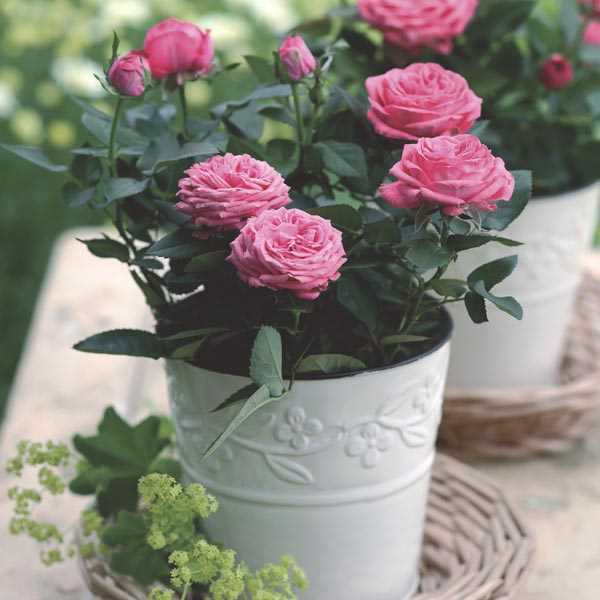
Harvest your roses in the early morning or late afternoon when the temperature is cooler. Avoid harvesting during the hottest part of the day as this can cause the flowers to wilt quickly.
2. Use Clean Tools
Before harvesting, make sure your tools are clean and sharp. This helps prevent the spread of disease and ensures clean cuts, which promotes faster healing for the rose plant.
3. Cut at a 45-Degree Angle
To harvest your roses, cut the stem at a 45-degree angle just above a leaf node. This angle helps maximize the water intake for the cut stem and prevents air bubbles from forming in the stem, which can block water uptake.
4. Remove Excess Foliage
After cutting the roses, remove any excess foliage that will be below the water line in your vase. This prevents the leaves from decaying in the water, which can cause bacterial growth and shorten the vase life of your roses.
5. Place in Clean Water
Immediately after harvesting, place the roses in a clean vase filled with lukewarm water. Make sure to add floral preservative to the water to extend the vase life of your roses.
6. Change the Water Regularly
To keep your indoor roses fresh and healthy, change the water every two to three days. This helps prevent bacterial growth and keeps your roses hydrated.
7. Display in a Cool Location
Avoid placing your vase of roses in direct sunlight or near heat sources. Roses prefer cool temperatures, so display them in a cool area of your home to help them last longer.
8. Enjoy the Fragrance
Indoor roses not only bring beauty but also a delightful fragrance. Take the time to appreciate the scents of your indoor roses and enjoy their presence in your home.
Following these tips will help ensure that you can harvest your indoor roses at the peak of their beauty and enjoy them for as long as possible.
Q&A:
How do I care for roses indoors?
To care for roses indoors, you need to provide them with enough sunlight, water them regularly, maintain proper humidity levels, and fertilize them occasionally. It is also important to remove any dead or yellowing leaves and keep an eye out for pests or diseases.
Can roses be grown indoors?
Yes, roses can be grown indoors. However, they require proper care and attention to thrive indoors. Providing them with enough sunlight, water, and maintaining the right temperature and humidity levels are crucial for their indoor growth.
What is the ideal temperature for indoor roses?
The ideal temperature range for indoor roses is between 60 and 75 degrees Fahrenheit (15 to 24 degrees Celsius). It is important to avoid extreme temperature fluctuations as they can negatively affect the plant’s growth and overall health.
How often should I water indoor roses?
Indoor roses should be watered when the top inch of soil feels dry to the touch. It is important to water them thoroughly, allowing water to drain out from the bottom of the pot. Overwatering should be avoided as it can lead to root rot.
Why are the leaves on my indoor rose turning yellow?
There are several reasons why the leaves on your indoor rose may be turning yellow. It could be due to overwatering, underwatering, lack of sunlight, or nutrient deficiencies. It is important to identify the underlying cause and take appropriate measures to address it.
Do indoor roses need fertilizer?
Yes, indoor roses do need fertilizer. However, it is important to use a balanced fertilizer specifically formulated for roses, and follow the recommended dosage. Over-fertilizing can be harmful to the plant, so it is crucial to read and follow the instructions carefully.
Can indoor roses be affected by pests and diseases?
Yes, indoor roses can be affected by pests and diseases. Common pests that can attack indoor roses include aphids, spider mites, and thrips. Diseases such as powdery mildew and black spot can also affect their health. Regular inspection and appropriate treatment can help prevent and control these issues.
Video:
The method of growing roses from buds the whole world does not know | How to propagation Roses







